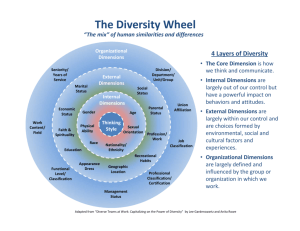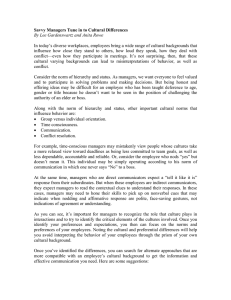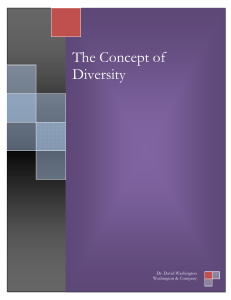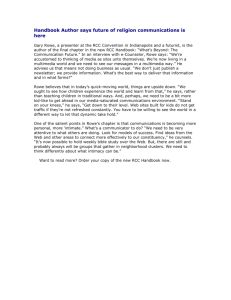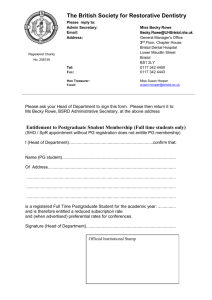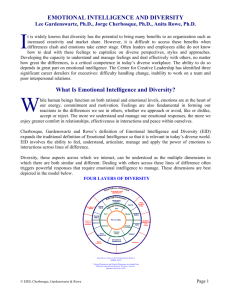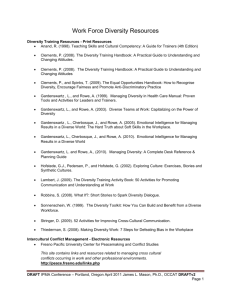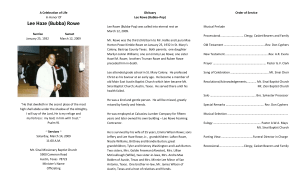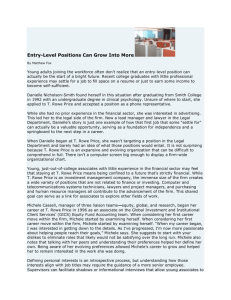culture clash: effectively managing diverse teams
advertisement
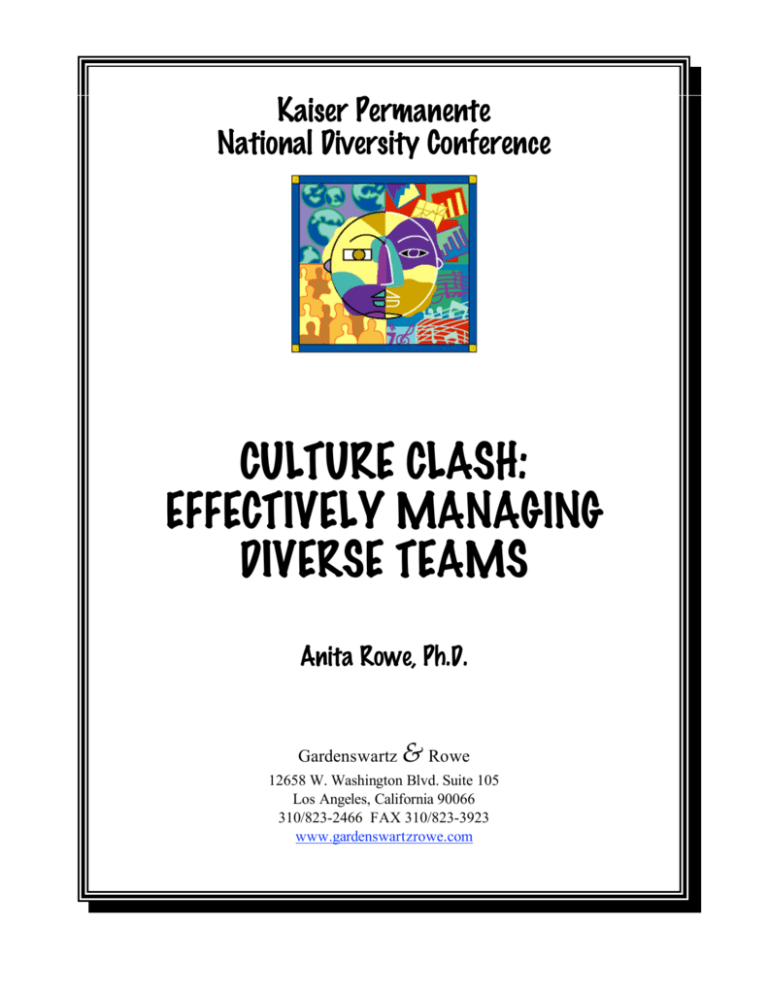
Kaiser Permanente National Diversity Conference CULTURE CLASH: EFFECTIVELY MANAGING DIVERSE TEAMS Anita Rowe, Ph.D. Gardenswartz & Rowe 12658 W. Washington Blvd. Suite 105 Los Angeles, California 90066 310/823-2466 FAX 310/823-3923 www.gardenswartzrowe.com HOW DIVERSE TEAMS BUILD Task: Product Focus Process Intervention Shoulder to Shoulder Relationship: Human-Dynamic Focus Diverse Teams at Work, Lee Gardenswartz & Anita Rowe SHRM, 2003 DIVERSITY ON THE TEAM 1. Select two dimensions that have the biggest positive impact team relationships and interactions. How do they play out on the team? 2. Select two dimensions that create barriers and exclusion? 3. Select the two dimensions around which it is easiest for you to connect with others on the team. How does this influence your behavior and interactions at work? 4. Select the two dimensions around which you feel the least comfortable with coworkers or patients different from you. How does that influence your behavior and interactions at work? What could you do to increase your comfort and enhance your interactions with people in this group? GETTING TO KNOW YOU AND ME 1. I was born in … 2. The most important teaching I got from my parents is … 3. What I like best about where I grew up is … 4. What I wish people understood about my culture is … 5. Things that bring me joy are … 6. I show stress by … 7. Some strengths I bring to this team are … 8. Some skills, talents or personality traits I’d like to develop are … 9. What I most need from other team members is … 10. What you can most expect to get from me is … 11. When we have problems, I wish we would … 12. My hero/heroine is … because… The Diversity Tool Kit, © Lee Gardenswartz and Anita Rowe, Irwin Professional Publishing, 1994 DIVERSITY PROBLEM SOLVING STEP I: Identify the Problem from Each Person’s Perspective • What are the underlying assumptions made by each? • How does each see the situation? STEP II: Determine Common Ground • Where do both sides overlap? • What goals do they share? STEP III: Find a Mutually Satisfying Solution • What adaptations is each person will to make in order to find a satisfactory alternative? • What solution(s) would meet the needs of both? Example 1 You manage a multicultural team of professionals who have a record of giving excellent care. They serve a member population made up of a large percentage of elderly patients. Some of these patients have refused to be treated by members of your staff because of their ethnicity and or race. In fact, their comments are laced with stereotypes and slurs. While you want to provide good care and know your staff will be rated by patients on satisfaction surveys, you cannot condone this blatant prejudice and you want to support your team members. Example 2 You are a manager of a department t made up of two major groups, old timers and newcomers. What makes it more complicated is that most of the old timers belong to one ethnic group, while most of the newcomers belong to another. The staff has begun to split into two distinct camps with complaints coming from both sides. The old timers feel they are being pushed out, while the newcomers complain that they don’t get a fair chance at promotions. This conflict is impacting teamwork and morale and you know you need to address this problem. Example 3 You manage a multicultural team. Everyone can speak English, yet members of one subgroup often speak their native language with one another in front of others, staff and patients, who do not understand. Some team members have complained that they feel left out and wonder if they are being talked about. You notice tension building and team members acting and more uncomfortable with each other and what’s worse, staff is beginning to polarize around this issue and divide into warring camps. ACTION STEPS FOR MANAGING DIVERSE TEAMS Relationships Start each team meeting with a personally relevant warm up. Have celebrations for team members (e.g., birthdays) and team accomplishments. Have potlucks where team members can share their cultures through food. Show and discuss member feedback scores on a regular basis. Share and discuss examples of cultural learnings regarding patient care and service. Spend time at team meetings focusing on problem solving culture clash situations. Task Process Intervention Spend time on team building at every team meeting, huddle and/or report. Take time to review the team’s accomplishments and needs periodically at staff meetings. Spend time at team meetings with cultural show and tell, giving team members an opportunity to learn about cultural differences on the team by sharing with and learning from each other. Shoulder-to-Shoulder Intentionally group staff across lines of difference for tasks. Make sure task forces and project teams have diverse membership. Send diverse pairs to conferences and learning experiences.
